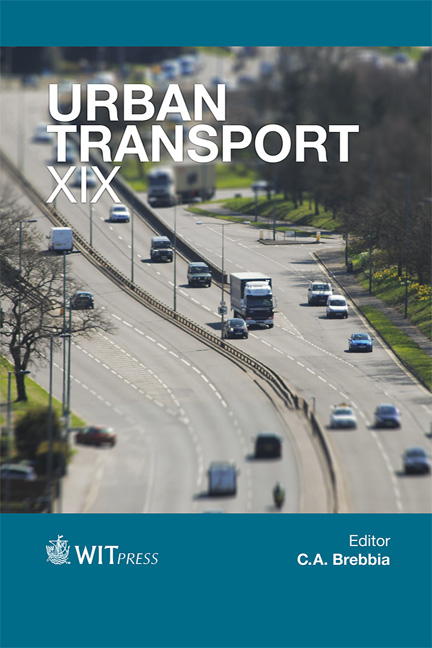Exposure To Traffic Air Pollutants In A Major US Urban Area With High Freeway Traffic: Has Anything Changed Over The Past Decade?
Price
Free (open access)
Transaction
Volume
130
Pages
5
Page Range
455 - 459
Published
2013
Size
332 kb
Paper DOI
10.2495/UT130361
Copyright
WIT Press
Author(s)
S. A. Grinshpun, M. Yermakov, L. A. Grinshpun, T. Reponen, M. Simmons, P. H. Ryan & G. K. LeMasters
Abstract
While airborne particulate matter (PM) has been associated with numerous health effects, very few studies have extensively examined the changes in exposure to PM and its health-relevant constituents, which occur in major metropolitan areas over time (e.g., 5–10 years). This study addresses changes in the PM2.5 concentration and elemental composition between two monitoring campaigns (2002–2005 and 2010–2011) carried out in the Cincinnati (Ohio, USA) metropolitan area. The area is known for high traffic volume, largely represented by diesel-powered trucks on regional freeways. The air monitoring was conducted at four sites. Through an analysis of variance comparison, differences between the two data sets were assessed for PM2.5, ten selected elements, elemental carbon (EC), organic carbon (OC), and EC/OC (a surrogate of the diesel exhaust contribution). Measured at the site that was previously found to exhibit the highest level of EC attributable to traffic, most of traffic related elements and the EC/OC ratio showed statistically significant decreases in concentration over time; however, the decrease became of borderline significance when wind variables were incorporated into the model. No major differences between data generated in the two campaigns were observed at the other monitoring stations with respect to EC/OC. Although the positive trends identified in this study (e.g., decrease in PM2.5, Ti, V, Mn, Fe, Zn, Br, and Pb, EC, OC, and EC/OC) may become sustainable in the future, no strong evidence was found that the air quality control and engine exhaust control policies implemented between 2005 and 2010 have produced significant changes in traffic air pollution levels in the entire metropolitan area. The PM monitoring
Keywords
traffic air pollution, aerosol exposure monitoring, PM2.5, carbon, elemental concentration





